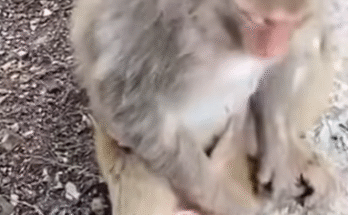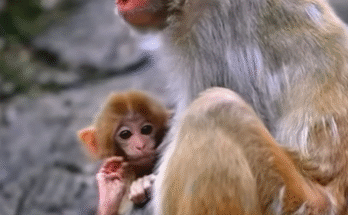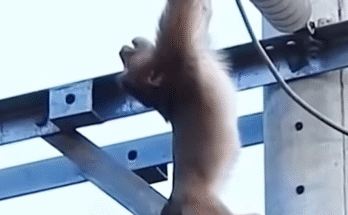High in the dense green canopy, a young monkey whimpered softly. He reached out his tiny hands toward his mother, hoping for milk. But the mother monkey, calm yet firm, turned away. Her eyes were gentle but resolute. The baby didn’t understand why she refused him—he only knew he was hungry.
This small scene is part of a greater rhythm in the forest: the cycle of learning and independence. For many animals, including monkeys, growing up means learning to survive without constant care. The mother’s refusal wasn’t cruelty—it was guidance. She was teaching her baby to explore other food sources, to climb and forage, and to become self-reliant.
As the day passed, the baby monkey followed his mother through the trees. He watched her pick ripe fruits and chew tender leaves. Imitating her movements, he plucked a piece of fruit and tasted it. It wasn’t as comforting as milk, but it filled his belly. His mother watched quietly from a nearby branch, ready to protect him if danger appeared but allowing him to learn by doing.
In the world of monkeys, every gesture carries meaning. Grooming builds trust, calls warn of predators, and shared food strengthens bonds. Their lives mirror our own in many ways—filled with love, patience, and lessons that are sometimes hard to understand in the moment.
By evening, the baby monkey curled beside his mother, tired but content. He had learned something new that day—not just how to find food, but how to grow. The forest around them hummed with life, a reminder that every creature, no matter how small, must learn to stand—or climb—on its own.


